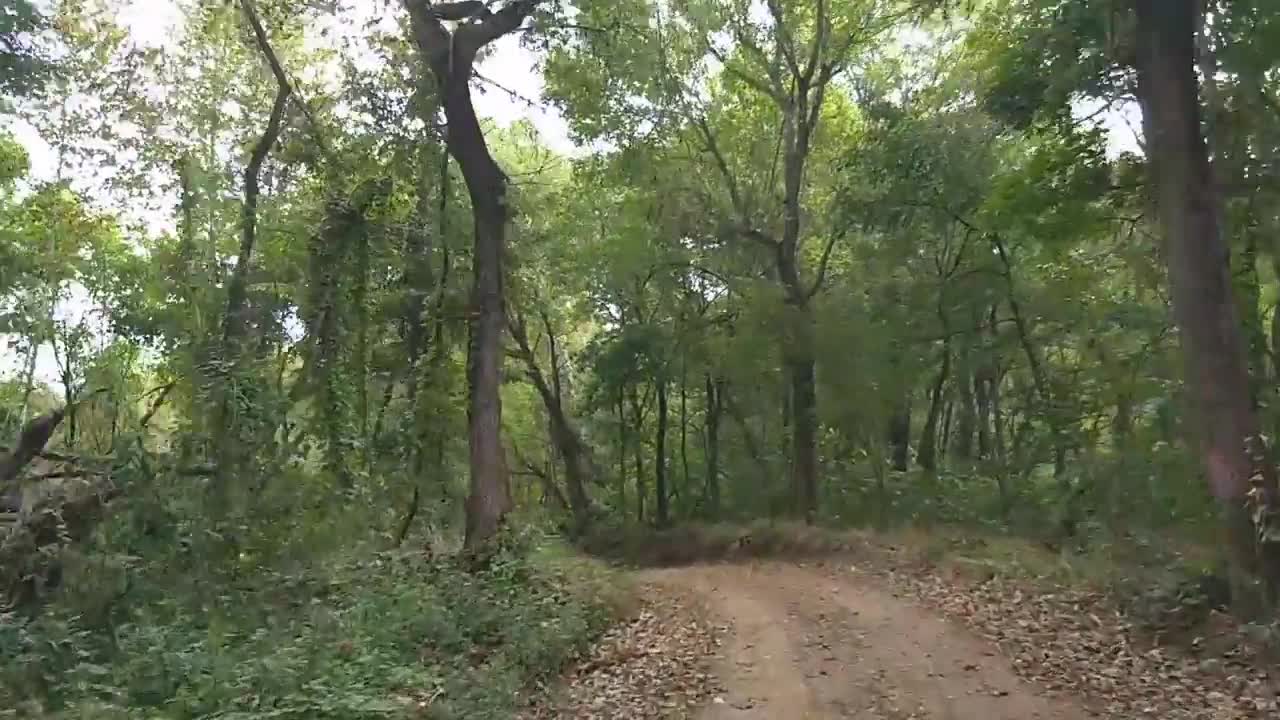Premium Only Content

Henry Rowe Schoolcraft & Levi Pettibone location December 5 - 6, 1818
A drive through the small village of Mammoth in Ozark County, Missouri. This video is a brief overlook of a portion of the Centennial Route of Henry Rowe Schoolcraft & Levi Pettibone. Schoolcraft & Pettibone passed through this region on Lick Creek, a tributary of the North Fork River. Their date for passing through this location was December 5th & 6th, 1818.
Concerning Schoolcraft and Pettibone's mishap in this valley, Schoolcraft writes:
"Dec. 5th. The rain ceased during the night, and left us a clear atmosphere in the morning. At an early hour we completed the package of the horse, and, taking the reins, I led him to the brink of the river, and with difficulty effected a passage. The cliffs which formed the western side of the valley, presented an obstacle not easily surmounted. By leading the animal in a zigzag course, however, this height was finally attained. The prospect, as far as the eye could reach, was discouraging. Hill on hill rose before us, with little timber, it is true, to impede us, but implying a continual necessity of crossing steeps and depressions. After encountering this rough surface about two miles, we came into a valley having a stream tributary to the Great North Fork of White river, which we had quitted that morning, but at a higher point. In this sub-valley we found our way impeded by another difficulty—namely, the brush and small canes that grew near the brook. To avoid this impediment, I took the horse across a low piece of ground, having a thicket, but which appeared to be firm. In this I was mistaken; for the animal's feet soon began to sink, and ere long he stuck fast. The effort to extricate him but served to sink him deeper, and, by pawing to get out, he continually widened the slough in which he had sunk. We then obtained poles, and endeavored to pry him up; but our own footing was continually giving way, and we at length beheld him in a perfect slough of soft black mud. After getting his pack off, we decided to leave him to his fate. We carried the pack to dry ground, on one side of the valley, and spread the articles out, not without deeply regretting the poor beast's plight. But then it occurred to us that, if the horse were abandoned, we must also abandon our camp-kettle, large axe, beds, and most of our camp apparatus; and another and concentrated effort was finally resolved on. To begin, we cut down two tall saplings, by means of which the horse was pried up from the bottom of the slough. He was then grasped by the legs and turned over, which brought his feet in contact with the more solid part of the ground. A determined effort, both of horse and help, now brought him to his feet. He raised himself up, and, by pulling with all our might, we brought him on dry ground. I then led him gently to our place of deposit, and, by means of bunches of sere grass, we both busied ourselves first to rub off the mud and wet, and afterwards to groom him, and rub him dry. When he was properly restored, it was found that he was able to carry his pack-saddle and pack; and he was led slowly up the valley about three miles, where we encamped. The grass in this little valley was of a nourishing quality, and by stopping early we allowed him to recruit himself. We did not estimate our whole distance this day at more than nine miles.
Dec. 6th. Butcher had improved his time well in the tender grass during the night, and presented a more spirited appearance in the morning. We were now near the head of Bogbrook, which we had been following; and as we quitted its sides, long to be remembered for our mishap, we began to ascend an elevated and bleak tract of the Mocama or Knife hills, so called, over which the winds rushed strongly as we urged our way. Few large trees were seen on these eminences, which were often bare, with a hard cherty footing, replaced sometimes by clusters of brambles and thickets. In one of these, a valuable couteau de chasse was swept from its sheath at my side, and lost. I was now reduced to a single knife, of the kind fabricated for the Indians, under the name of scalper."
Find Schoolcraft journal at: http://www.gutenberg.org/files/36675/36675-h/36675-h.htm
-
 LIVE
LIVE
JuicyJohns
3 hours ago $0.92 earned🟢#1 REBIRTH PLAYER 10.2+ KD🟢
272 watching -
 1:45:07
1:45:07
Dear America
3 hours agoAndrew Bailey is now Bongino’s CO-DEPUTY DIRECTOR of the FBI!! Is Bongino On His Way Out??
89.3K66 -
 LIVE
LIVE
Reidboyy
2 hours agoNEW FREE FPS OUT ON CONSOLE TODAY! (Delta Force = BF6 with Killstreaks)
45 watching -
 2:19:32
2:19:32
Matt Kohrs
11 hours agoMore Pain Incoming?! || LIVE! Trading Futures & Options
32K2 -
 26:53
26:53
Law&Crime
17 hours ago $0.88 earnedTikTok Teen Sarah Grace Patrick Sobs in Dramatic Court Meltdown
8.33K4 -
 LIVE
LIVE
GritsGG
2 hours agoWin Streaking! Most Wins 3390+ 🧠
112 watching -
 LIVE
LIVE
Wendy Bell Radio
6 hours agoDemocrats Need Fake Data To Cover Up Their Incompetence
6,673 watching -
 4:04:43
4:04:43
The Bubba Army
1 day agoImmigrant Truck Driver.. Who's To Blame?! - Bubba the Love Sponge® Show | 8/20/25
156K9 -
 32:50
32:50
Uncommon Sense In Current Times
20 hours ago $1.74 earnedIs War Ever Just? Frank Turek Explains Just War Theory & Christian Ethics
40.1K8 -
 25:57
25:57
DeVory Darkins
1 day ago $22.58 earnedNewsom suffers HUMILIATING SETBACK after FATAL Accident as Trump leads HISTORIC meeting
76.3K153